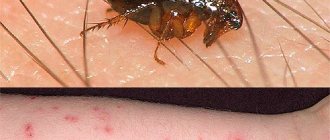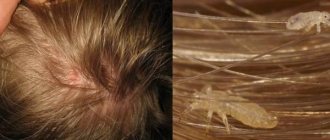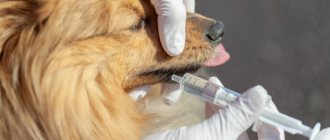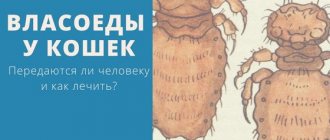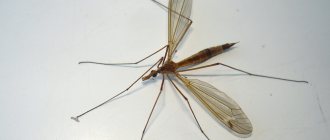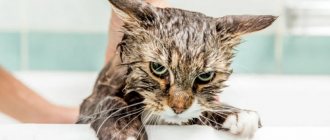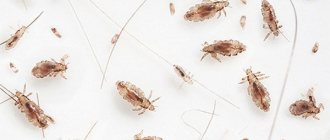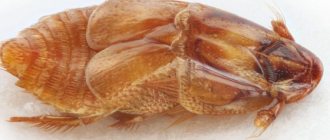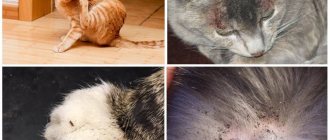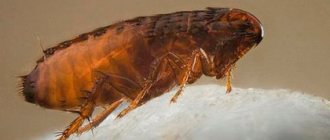- home
- Pest control
- Destruction of fleas
- Diseases transmitted by fleas
Fleas are found in both warm and cold areas.
However, parasites are most widespread in subtropical and temperate climates. In addition to climate, seasonal weather fluctuations also affect pest numbers. For example, during periods of moderate temperature (when it is neither hot nor cold), populations reach their maximum numbers. According to confirmed data, there are more than 2000 varieties of fleas. They comprise 15 different families. Some of the most common families include Ischnopsyllidae, Ceratophyllidae and Hystrichopsyllidae. The most studied are the so-called rat (Xenopsylla cheopis) and human (Pulex imtans) fleas. As you might guess, the victims of these species are humans or rats: the parasite feeds on the blood of its victim. Interestingly, sometimes warm-blooded birds and animals can also become victims. And sometimes several types of parasites can live on one creature at once. Fleas easily change hosts, jumping from one to another.
But there are also species that can only inhabit a certain type of animal. For example, fleas from bats cannot jump from them to another species of animal or to a person.
Intensive study of these pests began immediately after it was discovered that they were active carriers of the plague. To date, 60 species have been identified that are capable of transmitting more than 25 diseases. Both people and animals can become infected. In addition, fleas can become carriers and, accordingly, temporary hosts of parasitic worms. Jumping from rodents to people, individuals are capable of transmitting such terrible diseases as plague, rat typhus, etc.
Transmission of the infection occurs either through a bite or through insect excrement. At the time of the bite, the parasite’s saliva enters the skin, which causes severe irritation, itching, and inflammation. If the bite was caused by a penetrating flea (Sarcopsylla penetrans), there is a high risk of developing gangrene and even losing a limb.
Signs of a human flea
These insects are classified as temporary blood-sucking pests. The habitat becomes burrows and other habitats of domestic animals and rodents, which the parasites attack for the purpose of feeding.
In the process of evolution, insects lost their wings and became wingless for the second time. The type of oral apparatus is piercing-sucking. Its main purpose is to pierce the skin of warm-blooded creatures for feeding.
The body of the individual is quite long, flattened on the sides. The body consists of a head, abdomen, chest and three pairs of legs. Individuals move by jumping from place to place; the second and third pairs of legs are used for pushing, which allows them to jump quite high. The paws end in claws, which ensures rapid movement across the surface and a tenacious hold on the body of their prey. The parasite is protected from being crushed by a thick layer of hair, which in some way resembles thorns.
Features of the sand flea
Sand fleas Exotic pests are no less dangerous, one of which is the sand flea.
You can encounter similar insect representatives in India, Vietnam or the Caribbean. The method of feeding is the main feature of the pest. The parasite gnaws through the skin and is absorbed into a blood vessel. This feeding method is usually used by females carrying eggs. Moreover, in just a few days, their body volume increases several times. A strong inflammatory process occurs in the area of the embedded insect. And every day it intensifies as the body of the adult and its larvae grows. The injured person is forced to experience severe pain, sometimes depriving him of the ability to move. The consequence of delaying seeking medical help may be the development of gangrene.
The level of the problem can be understood by knowing what diseases fleas carry. And when the first signs of parasites appear in the fur of your pets, it is necessary to urgently take measures to combat them and get rid of fleas in the apartment.
Diseases that fleas can transmit
With the passage of time, the sanitary situation of cities does not improve, but rather the opposite. With the growth of industrial facilities, the amount of waste increases, hence all kinds of insects, etc. In this regard, people are increasingly interested in the question of where fleas come from and how to get rid of them.
A major role in the spread of diseases is played by the parasite’s tendency to change hosts – so-called temporary parasitism. When an individual sucks blood, it becomes infected with flea plague. The bacteria become established in the insect's body and can later be spread along with it over vast distances, entering other organisms through bites. Despite the fact that the causative agent of the disease can remain in an active state in the body of a flea throughout its life, it is not transmitted to its offspring.
It is rat parasites that transmit infections in a unique way. They spread endemic flea and epidemic typhus. A person can get the virus through a bite and contact of broken skin, respiratory tract or mucous membranes with rodent excrement. The infection process occurs most easily in warm regions, especially if there has been a massive spread of the pathogen among rodents.
Along with typhus, the flea body retains the causative agents of tularemia, melioidosis, pseudotuberculosis, anthrax, etc. for a long time. Human fleas, as well as cat and dog fleas, are often carriers of helminths.
Vector-borne diseases
The concept of vector-borne diseases
Parasitic diseases (parasitoses) are divided into groups depending on the pathogen:
- protozoa (pathogens are protists);
- helminthiasis (caused by parasitic helminth worms);
- acarinoses (pathogens caused by mites);
- insectoses (pathogens are insects).
Zoonoses are diseases whose pathogens are transmitted from animal to animal. Animals can also infect humans (example: plague of birds and mammals).
Anthroponoses are diseases whose pathogens are transmitted only from person to person (measles, scarlet fever).
Transmissible diseases are diseases whose pathogens are transmitted through the blood by a carrier - arthropods (ticks and insects).
Carriers can be mechanical and specific.
Mechanical carriers (flies, cockroaches) carry pathogens on the body, on the limbs, and on parts of the oral apparatus.
In the body of specific carriers, pathogens go through certain stages of development (malarial plasmodia in a female malaria mosquito, plague bacillus in the body of a flea). Transmission of the pathogen by a carrier occurs through blood sucking through the proboscis (inoculation), through contamination of the host's integument with the excrement of the carrier in which the pathogen is located (contamination), through eggs during sexual reproduction (transovarial).
In an obligately vector-borne disease, the pathogen is transmitted only by a carrier (example: leishmaniasis).
Facultatively vector-borne diseases (plague, tularemia, anthrax) are transmitted through a carrier and in other ways (through the respiratory system, through products of animal origin).
A vector-borne disease is characterized by the presence of:
- parasite - pathogen;
- vertebrate - host;
- arthropod carrier.
Natural hearth and its structure
In 1940 E.N. Pavlovsky, combining data from parasitology, ecology and epidemiology, formulated the doctrine of the natural focality of diseases. Natural focal diseases are associated with a complex of natural conditions and exist in certain biocenoses regardless of humans.
A natural focus is a specific geographic landscape in which the pathogen circulates from donor to recipient through a vector.
The donors of the pathogen are sick animals, the recipients of the pathogen are healthy animals that become donors after infection.
Scheme of a natural plague focus
The natural focus includes the following components:
- pathogen;
- pathogen vector;
- pathogen donor;
- pathogen recipient;
- specific biotope.
The final result (outcome) of infection of a recipient in a natural focus depends on the degree of pathogenicity of the pathogen, the frequency of the carrier’s “attack” on the recipient, the dose of the pathogen, and the degree of preliminary vaccination.
Natural foci are classified by origin and extent (by area):
By origin, lesions can be:
- natural (foci of leishmaniasis and trichinosis);
- synanthropic (focus of trichinosis);
- anthropurgic (focus of Western tick-borne encephalitis in Belarus); mixed (combined foci of trichinosis - natural + synanthropic).
Outbreaks by length:
- narrowly limited (the pathogen is found in a bird’s nest or in a rodent burrow);
- diffuse (the entire taiga can be a hotbed of tick-borne encephalitis);
- conjugate (components of plague and tularemia foci are found in the same biotope).
Medical significance of arthropods
- Vectors of pathogens (mechanical and specific).
- Pathogens (scabies mites, lice)
- Intermediate hosts of helminths (diptera insects for filariae, fleas for some tapeworms).
- Poisonous animals (scorpions, spiders, wasps, bees).
Arthropods as components of natural foci
Order Acari - ticks Family Ixodidae - ixodid ticks
Representatives: Ixodesricinus - dog tick, Ixodes persulcatus - taiga tick, Dermacentor pictus, Dermacentor marginatus.
The body size of ixodid ticks is from 5 to 25 mm. They live in open spaces (forests). The body has no divisions. Walking limbs – 4 pairs. The first two pairs of limbs form the oral apparatus - the “head”. On the dorsal side there is a chitinous shield, which covers the entire dorsal part in males, and only the anterior part in females. In ticks of the genus Ixodes the shield is dark brown; in ticks of the genus Dermacentor it has a marbled pattern. The “head” is visible from the dorsal side. There are eyes.
Ticks of the family Ixodidae
Features of biology. Blood sucking lasts up to several days. Capable of fasting for up to 3 years. Tick bites are painless, as the saliva contains anesthetic substances. The female lays up to 17,000 eggs.
Stages of development:
egg → six-legged larva (no stigma, trachea and genital opening) → several stages of nymphs (underdeveloped reproductive system) → adult.
At each stage, blood sucking occurs, which is why the development cycle is called gonotrophic.
Medical significance: they are specific carriers of pathogens of spring-summer and taiga encephalitis. The encephalitis virus infects the salivary glands and gonads of ticks; transmission of the pathogen is possible through blood sucking (inoculation) and through eggs (transovarial). Goats are susceptible to encephalitis, so transmission of the virus through goat milk is possible. Reservoirs of the encephalitis virus are birds and wild rodents. Ixodid ticks carry hemorrhagic fevers (damage to the walls of blood vessels, kidneys, blood coagulation systems), brucellosis, tick-borne typhus, and support foci of plague and tularemia. Ticks of the genus Dermacentor carry the causative agent of Scottish encephalitis (virus of sheep), which affects the cerebellum; also occurs in humans.
Family Argasidae – argas mites
Representative: Ornithodorus papillipes – village mite. The size of the tick's body is from 2 to 30 mm. The chitinous shield is absent.
The “head” is not visible from the dorsal side. There is an edge welt. There are no organs of vision.
Ticks of the family Argasidae
Argas mites are shelter forms (caves, rodent burrows, abandoned human buildings). Habitat: zone of steppes, forest-steppes, semi-deserts.
Features of biology: blood sucking lasts up to 50 minutes. They can go hungry for up to 12-15 years. The oviposition contains 50-200 eggs. Transovarial transmission of pathogens is possible.
Medical significance: specific carriers of tick-borne relapsing fever (tick-borne spirochetosis). Natural reservoirs of the pathogen are cats, dogs, wild rodents. The incubation period of the disease is 6-8 days. The saliva of ticks is toxic, and persistent ulcers form at the site of the bite. Tick bites can cause death in lambs and sheep.
Family Gamasidae - gamasid mites
Representative: Dermanyssus gallinae - chicken mite.
Body dimensions 0.2 – 0.3 mm. The body is covered with bristles. There are no eyes. They settle in rodent burrows and bird nests. They are permanent or temporary ectoparasites. Pigeon ticks, which can enter living areas, are dangerous to humans. Tick saliva is poisonous and causes the development of dermatitis. They transmit pathogens of tick-borne spirochetosis, encephalitis, and hemorrhagic fevers. They can transmit pathogens of plague and tularemia.
Order Anoplura – lice
Representatives: Pediculus humanus - human louse.
The species P.humanus has two subspecies: P.humanus capitis - human head louse and P.humanus humanus - human body louse.
Permanent ectoparasites. They live on the scalp or in the folds of clothing. Head louse body length: ♂ 2.0 – 3.0 mm, ♀ 2.4 – 4.0 mm; body lice: ♂ 2.1 – 3.7 mm, ♀ 2.2 – 4.7 mm. They feed on human blood.
Lice eggs are called nits. The head louse sticks it to the hair with a sticky secretion, while the body louse sticks it to the fibers of clothing. Development with incomplete metamorphosis. The larva is similar to the adult. The lifespan of a head louse is up to 38 days, and a body louse is up to 48 days. Head and body lice are specific carriers of typhus and relapsing fever (louse typhus). Human susceptibility to lice-borne typhus is absolute.
Head and body louse
The causative agent of typhus, Provacek's rickettsia, multiplies in the epithelial cells of the louse's stomach and is excreted in the excrement of the vector. Infection of a person occurs when parasite excrement is rubbed into the wound from bites while scratching (contamination). After an illness, a person develops a strong immunity.
The causative agent of relapsing fever - Obermeyer's spirochete - penetrates from the louse's stomach into the body cavity with the patient's blood. Human infection occurs when a louse is crushed and its hemolymph is rubbed into the skin by scratching (specific contamination). Immunity is not developed after the disease and relapses of the disease are possible.
The disease caused by lice of the genus Pediculus is called pediculosis (or “tramp disease”). The saliva of lice causes itching, and in particularly sensitive people - an increase in body temperature. Pediculosis is characterized by pigmentation and roughening of the skin. Complications of pediculosis - eczema, conjunctivitis, tangles (damage to the scalp).
Order Aphaniptera – fleas
Representatives: fleas of the genus Oropsylla and Xenopsylla (rat fleas) Pulex irritans – human flea
Fleas are temporary ectoparasites. Adults feed on human and animal blood, while larvae feed on organic debris. The laterally flattened body of the flea is covered with dense chitin and many hairs and bristles. On the head there are short antennae and simple eyes. The mouthparts are piercing-sucking type.
Human flea (Pulex irritans)
Development comes with complete metamorphosis. The larvae develop in floor cracks and dusty corners. Development period is 19 days.
Rat fleas are specific carriers of plague; they transmit tularemia and rat typhus. Fleas are intermediate hosts for rat and dog tapeworms. Foci of the plague remain in India, Pakistan and Burma. Natural foci of plague are maintained by wild rodents. Human susceptibility to plague is absolute. Natural reservoirs of plague are various wild rodents - rats, gophers, marmots, etc. The plague bacillus multiplies in the flea's stomach, forming a “plague block” that closes its lumen. Blood is regurgitated when blood is sucked into the wound along with bacteria.
Order Diptera - Diptera.
The front pair of wings are membranous and transparent, the second pair has turned into small appendages - halteres - a flight control organ. There are large compound eyes on the head. The mouthparts are licking, sucking or piercing-sucking.
Family Muscidae - flies
Stomoxys calcitrans – autumn fly.
Autumn fly and tsetse fly
The chitinous teeth of the proboscis scrape off the epidermis and lick the blood. Her saliva contains toxic substances and causes severe irritation. Liver bites are painful. Its greatest numbers are in August-September. The autumn zhigalka carries the pathogens of anthrax, tularemia, and staphylococcal infections.
Glossina palpalis - the tsetse fly - is a specific carrier of trypanosomes for sleeping sickness. It feeds on the blood of humans and animals. Viviparous. Body dimensions up to 13 mm. Found only in western Africa.
Family Tabanidae - horseflies.
Large flies (up to 3 cm). Males feed on plant juices, females on the blood of humans and animals. The saliva is poisonous and a tumor forms at the site of the bite. Development with metamorphosis takes place at the bottom of a reservoir or in moist soil. Horseflies are mechanical carriers of tularemia and anthrax pathogens, intermediate hosts and specific carriers of loiasis.
Horseflies (Tabanidae)
Family Simuliidae - midges.
Body sizes from 2 to 6 mm. Development takes place in water. Females feed on blood. Midge saliva is toxic. The bites are painful. Midges are carriers of tularemia and onchocerciasis.
Midge (Simuliidae)
Family Seratopogonidae – biting midges.
Body dimensions 1-2.5 mm.
Females feed on blood. Development takes place in moist soil and small standing ponds. Midges carry tularemia and some pathogens of filariasis. Participate in the transmission of Japanese encephalitis virus.
Midling (Ceratopogonidae)
Family Phlebotomidae - mosquitoes.
Body dimensions 1.5 – 3.5 mm.
Eggs are laid in rodent burrows, bird nests, caves, and trash. Males feed on plant juices, females on blood. Saliva is poisonous. The bites are painful, and ulcerative dermatitis develops in their place. Mosquitoes are specific carriers of leishmaniasis and pappataci fever (transovarial transmission). They also carry yellow fever and filariasis.
Mosquito (Phlebotomidae)
Family Culicidae - mosquitoes.
The most common representatives of the genera Anopheles, Culex, Aedes. Males have sucking mouthparts; they feed on flower nectar. The females have a piercing-sucking mouthparts; they feed on blood. Development takes place in small bodies of water, with complete metamorphosis. Egg maturation occurs after blood sucking during blood digestion (gonotrophic cycle). Mosquitoes are temporary ectoparasites of humans and animals. They carry up to 50 different diseases. Anopheles mosquitoes are specific carriers and final hosts of the causative agents of malaria - malarial plasmodia, and also transmit causative agents of filariasis.
Mosquitoes (Culicidae)
A – r. Anopheles, B – r. Culex
Culex mosquitoes carry encephalitis, Japanese tularemia, and wuchereriosis; mosquitoes of the genus Aedes – tularemia, yellow fever, Dengue fever, Japanese encephalitis, anthrax, wuchereriosis. Mosquito bites are painful and cause severe itching.
Biological basis for the prevention of vector-borne and natural focal diseases
Blood-sucking arthropods cause significant harm to human health and claim a huge number of lives. According to academician E.N. Pavlovsky “the proboscis of mosquitoes, lice, and fleas killed more people than died in battles that ever took place.” Agriculture also suffers significant damage from them.
The development and implementation of measures to combat blood-sucking arthropods is of great importance.
A. Biological control measures: the use of their natural “enemies”. For example: they breed Gambusia fish, which feed on the larvae of the malaria mosquito.
B. Chemical control measures: use of insecticides (against flies, cockroaches, fleas); treatment of places where mosquitoes and small bloodsuckers overwinter (basements, sheds, attics); closed garbage containers, toilets, manure storage facilities, waste disposal (anti-flies); spraying pesticides into water bodies if they are of no economic value (against mosquitoes); deratization (against ticks and fleas).
B. Individual protection measures against blood-sucking arthropods: protective liquids, ointments, special closed clothing; cleanliness of the premises, wet cleaning; notching residential windows; cleanliness of body and clothing.
Print Email
Can humans have fleas?
Despite its name, this type of parasite cannot have a permanent residence on the human body. The individual visits the human body only during feeding moments. Individuals constantly live in the folds of clothes and linen, in carpets, in pets’ bedding, in furniture, etc.
It is a misconception that pests prefer human hair. In fact, a variety of parts of the human body can be bitten: arms, legs, back, stomach, neck and sometimes the face. Visually, the bites look like large red pimples. They are accompanied by itching and sometimes develop into allergic reactions.
To cope with unpleasant sensations, you should apply a cooling cream to the bite site. The drug should be an antihistamine or antipruritic, for example, the drug "Fenistil". If there are scratches and, as a result, abrasions, it is necessary to treat this area with an antiseptic.
Allergy to flea bites
It can develop even if the owner has not found fleas on the animal. Fleas are very active in hot weather and can attack an animal for the purpose of a “short snack.” After several bites, the well-fed flea continues on its journey, leaving particles of its saliva in the wound. And in this situation, much depends on the sensitivity of the animal’s body. An acute allergic reaction develops quite quickly, manifested by severe itching and inflammation. The animal scratches the itchy areas, increasing the area of damage and introducing microbes from the paws or teeth into the scratches. The consequence of several flea bites can be extensive dermatitis.
When can you suspect flea dermatitis? If a dog or cat intensively scratches or licks areas on the back and at the root of the tail, but there are no signs of paraproctitis. Itches my ears and neck, but my ear canal is clean. If the itchy spots have the characteristic appearance of bright red “pimples” with a bleeding wound in the center. If the animal has previously been allergic to flea bites.
What to do?
First of all, treat the wounds with antiseptic agents. On the recommendation of a veterinarian, antihistamines can be used for topical use and in the form of tablets or suspensions. It is imperative to treat the animal against fleas, preferably with complex preparations containing insecticides and repellents. If fleas are especially active, it is recommended to use repellents separately, for example, putting a Fitodok collar on an animal treated with Bars drops. Repellents will make your pet's smell “unpalatable”, and he will be much less likely to become a victim of a flea’s “short snack”.
Pest prevention
Of course, most often you should pay close attention to the animals around you. That is:
- If you occasionally visit nurseries or other similar places, use insect repellent spray. Treat clothing and exposed skin every time.
- Also treat your pets with care: carefully inspect their fur, because they can bring parasites from garbage dumps or from other animals.
- It's better to be safe than to end up with a problem. So, buy a pet product to protect them from pests. This could be a collar or a special product for applying to the coat.
If somehow insects entered the house and started hunting you, you need to immediately take decisive action. Unfortunately, local treatment of yourself and animals will not solve the problem. But there is a reliable way to kill a human flea.
Which parasite is most dangerous for humans?
Fleas Parasites are carriers of more than two dozen pathologies dangerous to humans, accompanied by a high risk of mortality.
However, this does not mean that every insect bite can have such consequences. But the risk is still present and quite significant. By becoming a victim of dog or cat fleas, the carriers of which live in a person’s home, the risk of contracting typhus or tularemia is reduced, since bloodsuckers usually live only on these animals.
On a note!
Fleas that parasitize rodents pose a particular danger, since they are the carriers of bubonic plague, an extremely serious disease that affects most organs and systems.
In addition, neither rats nor mice are very clean, living in garbage dumps. They are also capable of eating dead animals, which increases the likelihood of contracting a dangerous infection.
It should also be taken into account that the attention of bloodsuckers can be attracted not only by healthy, but also by sick animals, which expands the possible list of multiple infections, bacteria and viruses.
Ways to fight
The most effective is considered to be the adoption of exterminatory measures in places where parasites are especially concentrated, as well as manipulations to stop the reproduction of a particular population. In such cases, when burrows are discovered, aerosol bombs are used for deep treatment with insecticides.
If a source of pest spread has been found in nature, a study of the territory in the system is carried out, forecasts are made for the further development of the colony and, importantly, planned epizootological monitoring is carried out, that is, the colony is checked for the presence of infections.
Indoors, pests multiply in the burrows of synanthropic rodents; in addition, their habitats include accumulations of dust and debris, cracks in the floor, and places where pets regularly stay.
Fleas and children
The risk of developing a serious illness in children increases when the child is not vaccinated.
The skin of babies is delicate and reacts more painfully to a parasite bite. Symptoms of an allergic reaction often occur. It is expressed in rashes, migraines, swelling of soft tissues. Heartworm parasites are not uncommon after bites. Palpation examination reveals enlarged lymph nodes. Children whose parents allow a cat or dog to sleep in the bed are at risk.
Parents should definitely know what diseases fleas carry. This will allow you to promptly identify the infection and consult a doctor. Timely treatment will reduce the risk of complications such as allergies and swelling.
After insect bites, children experience worms, decreased immunity, and signs of ulcerative lesions.
Parasites are also dangerous for pregnant women. During this period, infection leads to allergies, as a result of which the process of formation and development of the fetus is disrupted.
Types of pest control
Deratization refers to actions to destroy and prevent the appearance of pathogenic insects. Depending on the situation, disinfestation can be of two types:
- Emergency . Emergency disinfestation is based on the process of exterminating individuals at a specific site. This occurs if the presence of a colony at the facility is confirmed. If the customer only has suspicions, the sanitary service master travels and conducts an analysis on site to determine the presence and nature of the infection.
- Preventive . Prevention measures include both household and chemical measures. At the household level, it is recommended to carefully monitor the condition of pets and the cleanliness of residential and industrial premises. However, speaking about government and commercial institutions, scheduled chemical treatments are mandatory. Such work requires less time and resources, which also makes its cost lower. Of particular importance in this case is sanitary control over port cities and railway stations, where imported sick rodents may appear.
General information and structure
Fleas are classified as insects. They are small in size. Insects lack wings. The color ranges from light to dark, depending on the type of parasite.
Insects live and parasitize animals, feeding on blood. The size of fleas is no more than 0.5 cm.
Pests are found in all countries and are carriers of diseases. Bloodsuckers are able to survive in extreme conditions. Due to the morphological structure of the body, it is difficult to crush the parasite.
Insects do not fly; they spread by jumping over long distances. People are susceptible to parasite infection. Fleas are transmitted to humans from animals. The insect's jump height is 50 cm.
Stages of professional pest control
Let's look at the stages of professional pest extermination.
- Preparing the premises for disinfestation
The degree of effectiveness of the procedure depends not only on the professionalism of the specialist, but also on the extent to which the instructions for preparing the premises for treatment are followed. Instructions are provided by the SES operator by telephone before the specialist arrives.
In different cases, the necessary actions may differ. But in general they come down to the following list:
- The kitchen area should be prepared in this way: collect all the dishes and food and pack them in bags, then put them in cabinets. The same must be done in relation to pet food and bowls.
- Personal items (combs, toothbrushes, etc.) should also not be exposed to chemicals. So they pack up and go away.
- It is strictly recommended to carry out wet cleaning to remove dust and dirt from the floor and all surfaces. The fact is that a layer of dust will prevent the action of chemicals on the surface, which will significantly shorten the period of action of the substances.
- The aquarium (if there is one) should also be prepared: turn off the air supply and close the lid tightly until work is completed.
- Work of an SES employee
Having arrived at the site, which has already been prepared by the customer, the employee begins to destroy the human flea.
- Assessment of the situation. A competent specialist will definitely make a final inspection to ensure that the correct pest control strategy and appropriate products have been selected.
- Preparation of drugs. Having identified all the locations of the parasites and the degree of infection, the master prepares a chemical solution. To do this, you need to accurately calculate the dosage and concentration.
- Treatment. The application procedure itself does not take much time. Thanks to a modern development - a fog generator - the master is able to quickly and evenly spray the chemical in an infected room.
- Recommendations. Before leaving, the SES officer provides recommendations on preventing the appearance of insects in the future.
- Final steps after killing fleas
To consolidate the effect, as well as protect the family from poisoning, it is important to follow the rules:
- The drug should infuse for 1 hour. This means that the windows and doors of the apartment must remain closed.
- After this, it is necessary to thoroughly ventilate the home. 2-3 hours will be enough for this.
- Before all family members return home, all work surfaces should be wiped down with a damp cloth. You should also wet clean the floor, retreating 10 centimeters from the baseboard. It is recommended to refrain from general cleaning for 3 weeks.
- Bed linen and furniture covers must be removed and washed at high temperature. This will achieve two goals at once: the destruction of the chemical odor and the extermination of those individuals that were hiding in things.
Signs of a bite
A flea bite is always characterized by painful sensations that occur when saliva is injected. It does not contain chemical compounds similar to analgesics, like other insects.
The skin at the site of the bite turns red. A swelling with traces of blood forms in the center. The papule resembles a sign of AIDS, HIV infection.
A pronounced itching immediately appears. The main localization of bites is the lower extremities in the shin area. There are several of them, located at a distance of 2-3 cm from each other.
The temperature of the skin at the site of the bite increases, and the pain causes severe discomfort. When infected, your health begins to deteriorate. If the first signs of the presence of parasites appear in the house, they must be destroyed. If necessary, consult a doctor.
How to protect yourself and your pets from blood-sucking parasites
All pet lovers should remember that fleas are dangerous to humans from both cats and dogs. Therefore, you need to monitor the cleanliness of your pets no less than the cleanliness of your home.
Doctors recommend that the whole family take anthelmintic tablets every year. And if there are animals in the house that regularly go outside, then every 6 months.
First you need to carry out disinfestation of the outside of the house/apartment. Basements, landfills, attics - everything must be regularly cleaned of debris. Inside the apartment, general cleaning with special cleaning products. Special anti-flea shampoos and collars for cats and dogs are required.
Brief table of anti-flea drugs.
| Name of the drug | Description |
| "Raptor" | Spray, safe for humans. Nice smell |
| Get | Microcapsules diluted in water. Safe for humans |
| "Biorin" | Professional product with an unpleasant odor. For use only by certified pest control services. |
Flea infestation is easier to prevent than to treat. Therefore, all methods are used. From strong chemicals, which are abundant on the shelves of veterinary stores, to folk methods. For example, branches of dried wormwood in the corners of the house will repel parasites. Washing floors with hot water, soap and kerosene (300 grams + 100 grams + 10 liters) is also an excellent means of prevention.
What they look like
Is there a difference between flea bites and other blood-sucking insects (bugs, mosquitoes)? There are no specific signs that help to distinguish that a person was bitten by a human flea or a parasite living on an animal. The bite mark looks standard - a small reddish swelling. The puncture itself is invisible, which is explained by the small size of the hole.
We can be bitten by different types of fleas. But the least harm is caused by insects that parasitize domestic cats. The itching goes away within an hour, and the swelling and redness goes away within a day.
Certain symptoms indicate a flea bite. This:
- sharp pain at the site of skin puncture;
- a strong desire to itch, more significant than after a mosquito bite;
- location of the wounds - most often they can be found on the surface of the leg below the knee;
- seriality - the parasite bites several times in a row with a distance between spots of 1...2 cm.
The last symptom is similar to fleas, bedbugs and linen lice, which sometimes leads to confusion. But the difference, nevertheless, is quite significant. The bug leaves a characteristic trail of rash, and its blood-sucking “little sister” leaves several itchy, scattered spots. This is what helps to distinguish the culprit of the “triumph”.
Traditional methods of fighting fleas
For those who do not like chemistry and avoid it, centuries-old traditions have left their own recipes.
Tansy and wormwood are traditional plants for repelling parasitic insects. Use a decoction that is used to spray the room, dry and fresh twigs. Herbal remedies also include Persian chamomile and pine sawdust.
Eucalyptus and ammonia added to water for cleaning floors repel insects.
A mixture of baking soda and kitchen salt (50/50) helps get rid of parasites. Treat carpets, upholstered furniture, cracks. Leave it for 12 hours, then vacuum it. The same method uses a mixture of garlic and brewer's yeast. Insects cannot tolerate the smell of peppermint.
The best effect will be the combination of folk remedies with chemical ones.
